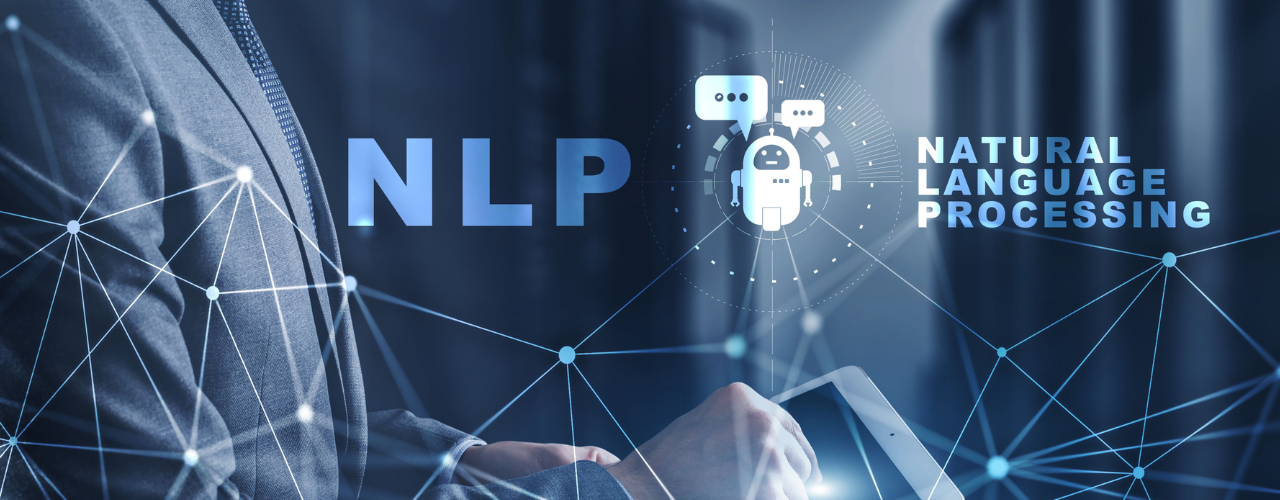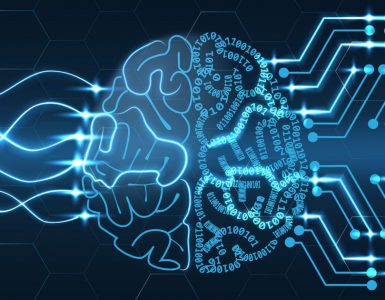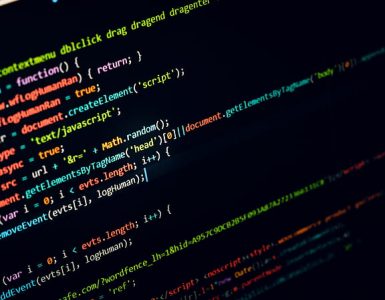You are probably familiar with the idea of Natural Language Processing (NLP) if you ever experimented with virtual assistants like Google Assistant, Alexa, and Siri on your phone. NLP is a division of AI (Artificial Intelligence), which aims to communicate with computers with natural human language like speech or text.
Creating models and algorithms involving language-related processes like speech recognition, translating one language to another, and sentiment analysis, everything falls under NLP. Such tasks can be automated using these models, which can help you save a tonne of time.
We’ll talk about these tools and techniques in this blog to help you comprehend and use NLP in your projects. Starting with popular NLP libraries and fundamentals like extraction, summarization, and tokenization, we’ll move on to best practices and practical tips for creating effective NLP models. Let’s get started!
Popular NLP Tools
Imagine you want to perform sentiment analysis on a large set of data, here manual processing can be difficult. To save time, and resources and to speed up the process, there are plenty of NLP tools to try out.
These tools are either accessible through open-source libraries or pre-built, cloud-based services like SaaS software. We will talk more about the open-source tools to get you started today.
1. Stanford CoreNLP
Stanford CoreNLP is a well-known Java-based NLP library built by the Stanford Natural Language Processing Community. Primarily built on Java, it comes with APIs in many other languages as well.
The library provides a variety of processes like sentiment analysis, human (natural) language analysis, tokenization, part-of-speech tagging, and named entity recognition.
As an open-source software, available to everyone for free under the GPL license. Additionally, Stanford offers a commercial license to use and integrate the CoreNLP library in commercial products, and a unique license intended to use in research and academic purposes.
2. OpenNLP
Another well-known NLP library created by the Apache Foundation is OpenNLP. It allows you to perform several operations like named entity recognition, part-of-speech (POS) tagging, tokenization, parsing, chunking, and coreference resolution. Apache OpenNLP comes with the option to use it as ait library, as a CLI or even as a standalone application. Since it is open source and free to use under the Apache license, it is one of the most well-liked options among developers.
As it is built by Apache Foundation, it can be easily integrated into other Apache software, such as Apache Spark and Apache Flink. OpenNLP also provides you with an API of pre-trained and fine-tuned models that can be deployed for particular projects.
3. PyTorch-NLP
PyTorch-NLP or torchnlp can be a wonderful option if you’re seeking an open-source, customisable NLP library that is based on PyTorch. It comes with a variety of utilities, such as language modelling, text classification, sequence tagging, text translation, sentiment analysis, and named entity recognition, that can easily be utilized in your NLP projects. torchnlp works as a supplement to PyTorch that gives you access to simple text data processing and image transformation features. Overall it has great support for rapid prototyping and text encoding.
4. NLTK (Natural Language Toolkit)
Supported by an active community, NLTK or Natural Language Toolkit is one of the most abundant tools packed with powerful algorithms for tokenization, tagging, stemming, parsing, part-of-speech tagging, and classification, written in Python. All of the data in the library is stored as strings, which makes it challenging to use for complex operations and can sometimes cause the model to lag.
To get you started, NLTK has detailed documentation and there is a great book called “Natural Language Processing with Python”.
5. Gensim
Gensim is another open-source Python library specializing in algorithms like Latent Dirichlet Allocation (unsupervised topic modeling), Latent Semantic Analysis (LDA), text summarization, and document similarity analysis and recommendation systems, contributing to tasks like text classification and document clustering.
It is frequently employed in applications that allow a user to retrieve specific, underlying information from a document.
6. SpaCy
spaCy is one of the most popular open-source NLP libraries written in Python.
It is designed to support huge datasets and comes with an easy-to-use installation guide. It works well for NLP-oriented tasks like dependency parsing, named entity recognition (NER), and sentence boundary detection. In contrast to NLTK, it represents the data as objects instead of strings, making it a potent competitor to NLTK. SpaCy can easily be used with other popular data science frameworks like PyTorch, TensorFlow, and scikit-learn. It is the ideal choice for projects that require high accuracy and optimized speed, but it might not be the best option when extensive use of deep learning models is required.
Choosing the right tool
Now that you are familiar with some excellent NLP tools, it is important to pick the right one for your specific project.
It relies on several factors, such as the features that need to be implemented, including but not limited to:
- Nature of models: Check to see if the tool has the pre-trained models you need for particular tasks, or if you have to train the models on your own. This can significantly save you a lot of time during production.
- Integration: Check if the product can be integrated easily with another tech stack you’re using in your project.
- Language support: This can be an underlying consideration if you want to implement features like sentence segmentation, tokenization, and part-of-speech tagging, as it improves the accuracy and effectiveness of your NLP project.
You may want to look for other capabilities like scalability, customization, speed and accuracy, depending on your needs.
Lastly, don’t be hesitant to try out different tools before you commit to one, as you’ll learn in the process of trial and error. So do your research, choose the best tool that fits your needs, and start developing!
Effective NLP Techniques
Now that you understand how to choose the best tool depending on your specifics, the next crucial thing is to be aware of the latest NLP techniques. This will help you develop faster, more accurate and more efficient models for your project. Let’s deep diver into such NLP techniques:
1. Sentiment Analysis
Sentiment analysis is one of the core techniques in NLP, commonly referred to as emotion AI. It is used to evaluate the input text and categorize it as positive, negative or neutral. Determining the text’s tone essentially determines a user’s sentiments. This helps in comprehending human emotions based on text format. Sentiment analysis is widely incorporated in customer feedback analysis, brand research and social media monitoring to analyze comments and reviews.
This enables a business to regularly pinpoint client problems, fix them, and deliver better results from time to time. One of the key use cases of sentiment analysis is to moderate the community by eliminating hate speech and keeping it safe for everyone.
2. Tokenization
One of the most simple approaches in Natural Language Processing, tokenization involves breaking down a text string into tiny, smaller components called tokens. These tokens are typically words, characters, or phrases. With this technique, raw text can be transformed into a format that is simple to process for different use cases. There are several techniques to tokenize words, for instance, splitting the text with separators like whitespace and punctuation. This paves the way for building many NLP models, as a result of the data being processed at the token level.
Tokenization is incorporated in many NLP tasks like text classification and sentiment analysis.
3. Stemming and Lemmatization
The NLP technique used in pipeline preprocessing after tokenization is stemming or lemmatization. This method provides a single root word for several variations of that term. For instance,
Sentence: “The cat is sleeping on the mat.”
Output: “the”, “cat”, “is”, “sleep”, “on”, “the”, “mat”
Stemming eliminates the end of a word, while lemmatization identifies the base form (lemma) of a word using morphological analysis. You can encounter real-life applications that are using this technique, particularly on online shopping websites, where you get results for terms similar to that of the text submitted by a user. Virtual assistants and chatbots employ stemming to comprehend user input and produce useful and satisfactory responses. Lemmatization is commonly used by search engines like Google to provide precise and pertinent search results.
4. NER (Named Entity Recognition)
In NLP, Named Entity Recognition, or NER, is used to retrieve data from the input text and then classify named entities into different categories such as a location, person, date, or company.
For example:
Input: “The Eiffel Tower was completed in Paris, France on March 31, 1889.”
Output:
B-LOC (“Eiffel Tower”, “Paris”, “France”)
B-DATE (“March”)
I-DATE (“31”, 1889”)
O (“the”, “was”, “completed”, “in”, “,” , “located”)
In this sentence, NER classifies the text as B-LOC for geographical locations, B-DATE and I-DATE for a date range, and O for other or unrecognized named entities. Here, the prefixes “B” and “I” denote the starting and end of a specified entity, respectively. NER is commonly used in tasks for recommendation systems and question-answer frameworks.
5. Topic Modeling
In topic modeling, common keywords are extracted from a document and grouped. It is an unsupervised ML algorithm that creates text clusters from a set of two interlinked topics. The underlying principle behind this is that each document will have several subjects, each of which will have the most significant terms from the fixed vocabulary. Topic modeling offers to provide such important terms to recognise the key theme of the document. Common methods are Latent Semantic Analysis (LSA), Latent Dirichlet Allocation (LDA) or Correlated Topic Model (CTM), which are used in trend analysis or content suggestion systems.
6. Text Summarization
Text summarization is used to condense large paragraphs into concise phrases. In NLP, this technique is used to extract the most useful information from a document and summarize it, keeping the main ideas undisturbed. There are two types of text summarization: extraction-based, where the input text produces a summarized result, and abstraction-based, where the input text gives paraphrased results.
Applications serving news article summarization and research paper paraphrasing use this approach commonly.
7. Keyword Extraction
Keyword extraction is a text analysis approach that offers insightful information and key concepts from a document by extracting significant and frequently used words from a topic, and eliminating the filler words such as “actually”, “so”, “um,” “ah,” and “like”. It is commonly used to determine a user’s interests while analyzing customer feedback.
8. Stop Words Removal
After stemming and lemmatization, stop words removal is performed. This NLP technique seeks to eliminate any words that are not necessary for a sentence; these words are typically conjunctions (and, or, but, so, because) or prepositions (in, on, to, at, between, of). This phase is crucial to the preprocessing process since it allows the NLP model to perform more quickly and efficiently with less input.
Conclusion
Natural Language Processing has transformed the way a user interacts with a machine, using different techniques like extraction, text classification and text manipulation.
If you made it this far, you now understand how crucial it is to use the appropriate tool and apply a certain NLP technique to a particular task. NLP has become even more accessible for everyone to use, all thanks to the numerous open-source libraries available online. So utilize these resources today and start working on your first project to explore the powerful world of NLP.






Add comment